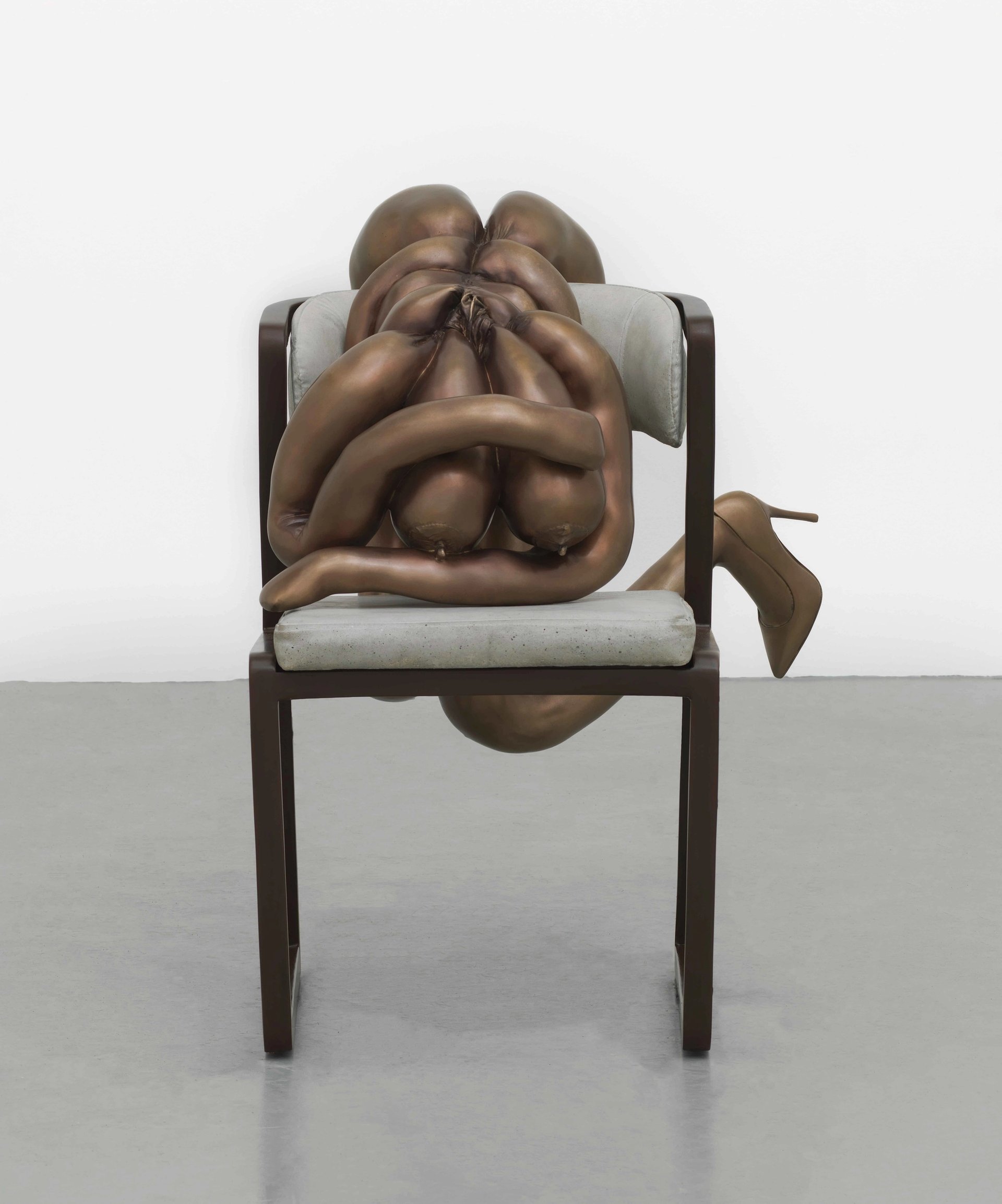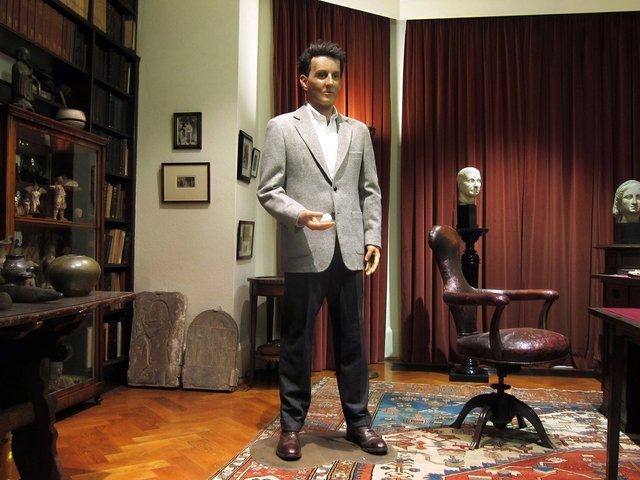The last home of Sigmund Freud, now a museum in north London, will be filled from front door to garden with works of art by women, in the first exhibition anywhere celebrating the women in the neurologist’s life. These women range from early patients whose traumas helped form his theories of psychoanalysis, family members such as his daughter Anna, who became a pioneering child analyst, and friends including Virginia Woolf.
The museum has secured spectacular loans by women, many from the artists themselves or their estates. Among the stand-out works are previously unseen fabric works by the late Paula Rego, including some of her sinister cloth “dollies”; neon works by Cornelia Parker and Tracey Emin; Sarah Lucas’s 2022 Sex Bomb, a bronze and concrete sculpture of a bulbous figure slumped in a chair; a porcelain sculpture by Rachel Kneebone; and spreads from the graphic memoir by the American artist Alison Bechdel, Are You My Mother?. They will join works by Marie-Louise von Motesiczky, Louise Bourgeois, Alice Anderson, Christina Kimeze, Helen Chadwick, Alison Bechdel, Carolina Mazzolari, Sharon Kivland, Abigail Schama and Emily Berry.

Cornelia Parker, Ghost Notes: Yes/No
Courtesy of the artist and Frith Street Gallery, London. Photo: Stephen White & Co
Freud, who was born to Jewish parents, and his family came from Vienna to 20 Maresfield Gardens in Hampstead, London, in 1938, as refugees from Nazism. Unusually they managed to bring their possessions, including his famous couch which was a gift from one of his wealthy women patients, Madame Benvenisti. The house and his study-consulting room—where he died in 1939—were preserved by his daughter, who lived there until her death in 1982. It opened as a museum just four years later.
The exhibition, opening on 30 October, is co-curated by museum curator Bryony Davies and the authro Lisa Appignanesi, whose books include studies of women and psychiatry, and of Freud’s relationships with women. In a joint statement they said: “The exhibition reveals how women were the driving force behind psychoanalysis and how Freud’s life and work continue to intrigue women today. The combination of a truly exceptional collection of works of art and the unparalleled personal setting will make the exhibition a memorable and significant instalment in the continuing story and enduring legacy of Sigmund Freud.”

Photograph of Anna Freud (1920s), photographer unknown
© Freud Museum London
The exhibition will be the first in the museum’s recently upgraded and extended exhibition spaces, made possible through support from the Marie-Louise von Motesiczky Charitable Trust—founded in memory of the artist, who also escaped Vienna in 1938—which is also supporting the exhibition.

Sarah Lucas, SEX BOMB 2022
© Sarah Lucas. Courtesy Sadie Coles HQ, London. Photo: Steve Russell St
Among Freud’s visitors in Hampstead were the authors Virginia and Leonard Woolf, who came to tea in 1924. Their publishing house, Hogarth Press, had around that time published Freud’s groundbreaking work in English. thee centenary of the first publication is marked this year by a revised 24-volume standard edition.
The exhibition will include a film piece by Deborah Levy and Sarah Thorburn, leading visitors upstairs to historical displays that feature further films as well as photographs, manuscripts and letters—including some exchanged between Freud and his wife Martha Bernays during their long engagement.

Stills from Freud’s Lost Lecture 2019) by Jane Thorburn and Deborah Levy
© Jane Thorburn and Deborah Levy
Also on display will notebooks owned by Princess Marie Bonaparte, the great grand niece of the emperor, a patient who herself became an analyst and helped the Freud family escape Vienna.
- Women & Freud: Patients, Pioneers, Artists, Freud Museum, London 30 October-5 May 2025. www.freud.org.uk






